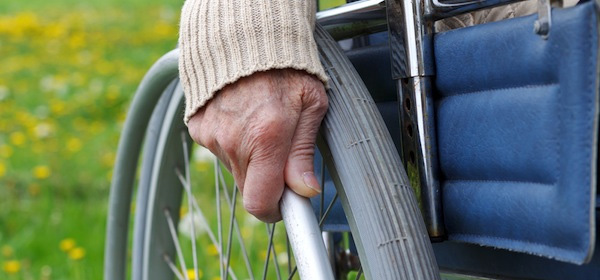Tougher assessment procedures for a Disability Support Pension have resulted in the Federal Government forecasting a $4.8 billion drop in expenditure in 2027-28 compared with this financial year.
The Parliamentary Budget Office (PBO) released its projections this week, citing tougher assessment and compliance measures as the keys to the savings.
In the past five years, 70,000 fewer people have received a Disability Support Pension.
The PBO attributes part of the drop to revised assessment procedures in 2014 which saw government contracted doctors replace treating doctors for reports on applicants. It anticipates further losses once the residency requirement for recipients jumps from 10 to 15 years on 1 July.
In 2016-17, about 760,000 disability support pensioners in Australia received $16.3 billion or 10.6 per cent of the total welfare budget, according to the report, making it one of the Federal Government’s biggest areas of spending.
Disability pensions are paid to people assessed as not being able to work because of permanent physical, intellectual or psychiatric impairment.
Expenditure jumped after the global financial crisis, averaging 8.7 per cent annual real growth from 2008-09 to 2011-12 – a result the PBO attributes to a softer labour market – but eligibility rules were subsequently tightened and real growth averaged 0.2 per cent from 2012-13 to 2016-17.
The reports says there has been a decline in the number of disability pensioners with physical impairments (from 84 per cent in 2002-03 to 79 per cent in 2014-15) and an increase in those with psychiatric and intellectual impairments (25 per cent to 33 per cent over the same period). The average age of new pensioners with physical issues is 57, while those with psychological or intellectual conditions are typically younger, 48 and 37 respectively.
Social Services Minister Dan Tehan said the projections were a reflection of more disabled pensioners being encouraged to work and tougher assessment conditions. He broadened his argument to all Australians on welfare payments.
“Under the Coalition the number of working-age Australians dependent on welfare has reduced by 140,000, taking it to 15.1 per cent of the working age population – the lowest proportion it’s been in at least 25 years,” he said.
Greens Senator Rachel Siewert told News Limited the spending slowdown should not be viewed as a good thing.
“Rather than focusing on driving down DSP rates, we should be focusing on revenue raising measures so that those with a disability don’t have to desperately defend their right to receive support,” she said.
Related articles:
Centrelink under fire
How to secure son’s future
Free advice at Centrelink

